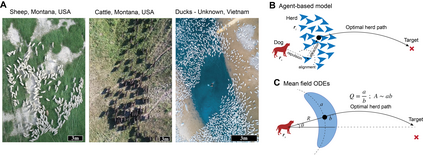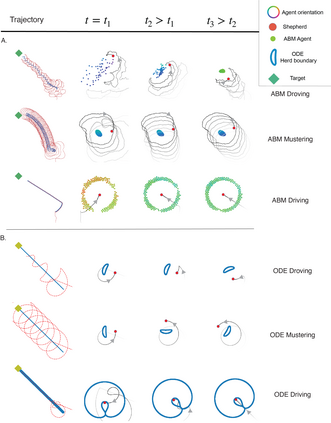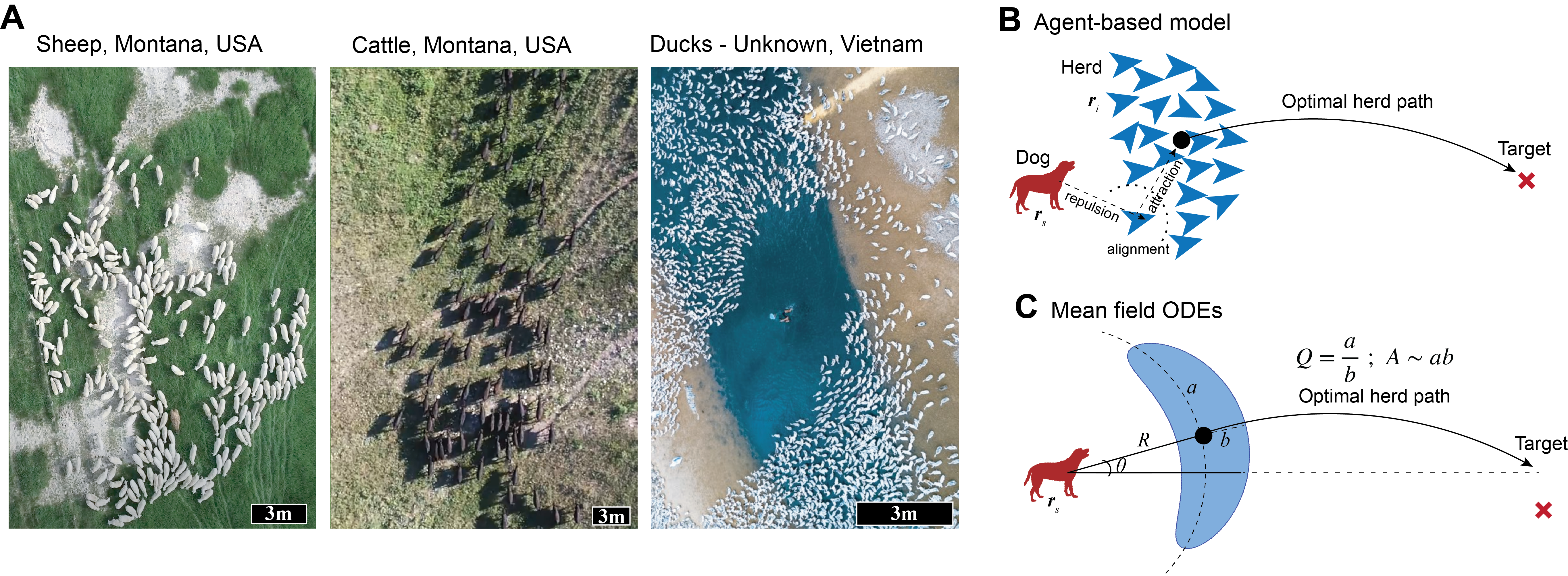We investigate how a shepherd should move in order to effectively herd and guide a flock of agents towards a target. Using a detailed agent-based model (ABM) for the members of the flock, we pose and solve an optimization problem for the shepherd that has to simultaneously work to keep the flock cohesive while coercing it towards a prescribed project. We find that three distinct strategies emerge as potential solutions as a function of just two parameters: the ratio of herd size to shepherd repulsion length and the ratio of herd speed to shepherd speed. We term these as: (i) mustering, in which the shepherd circles the herd to ensure compactness, (ii) droving, in which the shepherd chases the herd in a desired direction, and (iii) driving, a hitherto unreported strategy where the flock surrounds a shepherd that drives it from within. A minimal dynamical model for the size, shape and position of the herd captures the effective behavior of the ABM, and further allows us to characterize the different herding strategies in terms of the behavior of the shepherd that librates (mustering), oscillates (droving) or moves steadily (driving). All together, our study yields a simple and intuitive classification of herding strategies that ought to be of general interest in the context of controlling the collective behavior of active matter.
翻译:我们调查牧羊人应该如何行动,以便有效地牧羊,引导成群的代理人走向一个目标。我们使用一个详细的以代理人为基础的模型(ABM),为羊群成员提出并解决一个最优化的问题,牧羊人必须同时工作,保持羊群的凝聚力,同时将羊群强迫到一个规定的项目上。我们发现,三种不同的战略作为潜在的解决办法,只要有两个参数即可:牧羊体大小与牧羊人排水长度之比和牧羊速之比。我们将这些战略称为:(一) 放牧,牧羊人圈圈羊群,以确保紧凑;(二) 漂流,牧羊人追赶羊群朝一个理想的方向前进;(三) 驱动牧羊群从内部包围牧羊群的迄今未报告的策略。 牧羊群大小、形状和位置的最小动态模型可以捕捉到反弹道导弹的有效行为,并进一步让我们从牧羊人的行为角度来描述不同的牧羊人的行为,即解放者、食羊人(强迫)、食羊人(骑船),或稳步地控制我们一般的兴趣水平的研究。







